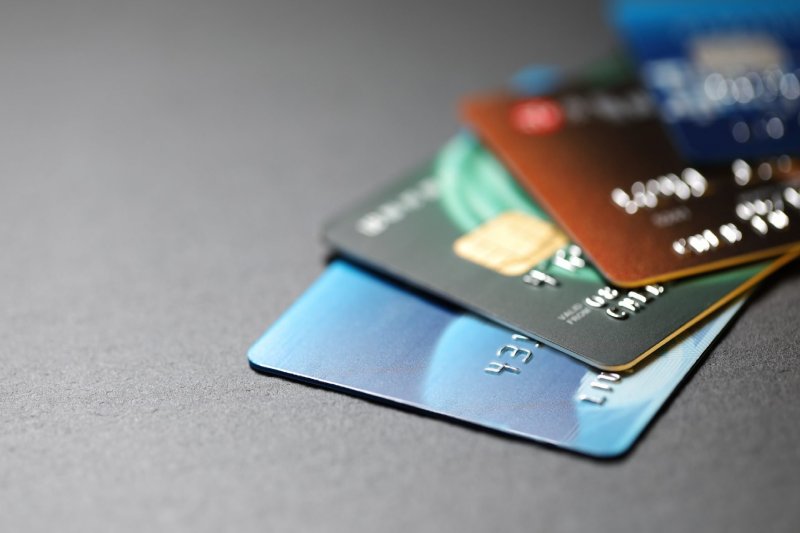Business
Five Trends to Look Out For in Credit Cards in 2024

Even though there was no recession in 2023, it was nonetheless a difficult year financially. As expenses and interest rates increased, many consumers resorted to using credit cards to make ends meet, incurring additional debt in the process. The overall amount of credit card debt owed by American households rose by 15.6% between 2022 and 2023, per NerdWallet’s 2023 American Household Credit Card Debt Study. What transpired with credit cards last year was as follows:
Competiscan, a company that records and analyzes direct marketing activity, says the credit card industry took a cautious approach, easing back on those targeted credit card offers you get in the mail or your email inbox.
Customers chose buy now, pay later options and lower-rate credit limit borrowing as a means of obtaining lower-interest loan products. “It gives people more options on how to manage their money and what works best for them, which is something I like,” says Beth Robertson, managing director of financial services intelligence company Keynova Group. “I believe that will hold true despite changes in interest rates.”
In an era of rising prices, credit card rewards continued to be significant to customers who wanted to maximize the value of their purchases.
These Are a Few Trends That 2024 Might Bring
Interest Rates Could Go Down
Since the start of 2022, interest rates have grown eleven times. According to the Federal Reserve, the average annual percentage rate (APR) paid for credit card accounts that incurred interest reached its highest point in the third quarter of 2023 at 22.77%. As of November 2023, the average rate had slightly decreased to 22.75%. It is anticipated that the Fed would cut interest rates in 2024 as a result of the slowing inflation.
Nevertheless, as compared to other loan kinds, credit cards have higher interest rates. It’s worthwhile to think about strategies to cut down on interest payments, such combining debt with a personal loan or utilizing a credit card with a balance transfer. With certain credit cards, you can take out low-interest loans against a portion of your credit limit. To find out if you qualify for a reduced interest rate, you can also give your credit card provider a call.
The Credit Card Competition Act is The Focus of Attention
A payment network such as Visa or Mastercard acts as a middleman between the credit card company and the retailer when you make a purchase using a credit card. These networks charge an interchange fee, which is a little portion of the purchase price, for their services. The retailer must go through Visa to conduct the transaction and pay any fees if you use a card that is part of the Visa network, which is any card that has the Visa logo on it. The retailer must process the payment through Mastercard and pay the associated fee if a customer presents a credit card with that logo.
A bipartisan bill known as the Credit Card Competition Act would force big banks that issue credit cards to give retailers greater options when it comes to payment networks they can employ to handle transactions. The theory behind this is that by creating competition, some of those interchange fees—which many retailers think are exorbitant—might be reduced. Proponents claim that retailers may reinvest in their companies or pass those lower costs on to customers, improving the customer experience.
However, the plan’s detractors point out that since it doesn’t force retailers to cut their prices, there’s nothing prohibiting entrepreneurs from keeping the money they make. Additionally, they claim that credit card issuers may scale back their rewards programs to make up for lost interchange fee income.
All of these potential outcomes, meanwhile, are merely theories for the time being. Nobody is certain of the precise ramifications of the bill or whether it will advance at all this year.
Reward Concepts Will Keep Evolving
Although a little cliche at this point, receiving cash back or travel rewards when you use your card for dining out, groceries, gas, and travel expenses is really great. Credit card companies are still reevaluating benefits in an effort to draw in and keep Gen Z and millennial customers.
More customisation, in the opinion of Jacqueline White, president of i2c Inc., a worldwide supplier of banking and payment solutions, makes younger customers feel as though their credit cards are taking notice of them. According to White, “it all boils down to marketing to you specifically as an individual, knowing your age, stage of life, and financial goals.”
According to Matthew Goldman, the founder of the financial technology consulting business Totavi, enterprises involved in financial technology will persist in introducing novel credit cards to the market. “A lot have failed, but that won’t stop people from trying.”
More cards that offer benefits in relatively new categories—like online shopping, paying rent, and charging electric vehicles—should be expected as they appeal to the younger population. A more tailored card for your needs will be a better card for you, which is why innovation is exciting, according to Goldman.
Cardholders Desire to be Close to Issuers
As stated by Jessica Duncan, assistant vice president of research and insights at Competiscan, card issuers may retain their clients by integrating them into a whole ecosystem. In order to achieve this, travel rewards cards encourage users to book future travel through brand-specific portals rather than directly through airlines and hotels. According to Duncan, credit-building credit cards that demand that cardholders open a bank account with the same institution in order to fund the credit limit on the card also exhibit similar behavior.
Another strategy to maintain higher card use, according to Robertson, is to offer short-term promos that let users accrue more points. For instance, a recent limited-time deal for certain Chase cards gave you a statement credit if you paid with your card for specific bills like internet, utilities, transportation, or gym memberships.
There Will Soon be No More Magnetic Stripes
With the intention of eliminating magnetic stripes entirely by 2033, freshly issued Mastercard credit and debit cards will not be obliged to include them starting this year. Their designs could appear very different because the backs of cards free up so much valuable real estate.
This would open the door for more cards with vertical designs, which are more in keeping with how consumers hold their cards while putting them into chip scanners, according to Meg Cipperly, vice president of client services at Competiscan.
-

 Sports4 weeks ago
Sports4 weeks agoAl Ahly vs Inter Miami, 2025 FIFA Club World Cup – Preview, Prediction, Predicted Lineups and How to Watch
-
Health3 weeks ago
Back to Roots: Ayurveda Offers Natural Cure for Common Hair Woes
-

 Tech3 weeks ago
Tech3 weeks agoFrom Soil to Silicon: The Rise of Agriculture AI and Drone Innovations in 2025
-

 Startup4 weeks ago
Startup4 weeks agoHow Instagram Is Driving Global Social Media Marketing Trends
-

 Sports3 weeks ago
Sports3 weeks agoFIBA 3×3 World Cup 2025: Full Schedule, Preview, and How to Watch
-

 Science4 days ago
Science4 days agoJuly Full Moon 2025: Everything You Should Need to Know, When and Where to See Buck Moon
-

 Gadget3 weeks ago
Gadget3 weeks agoThings to Know about Samsung Galaxy S26: What’s New and What’s Next
-

 Sports4 weeks ago
Sports4 weeks agoWorld Judo Championships 2025: Full Schedule, Date, Time, Key Athletes and How to Watch

























